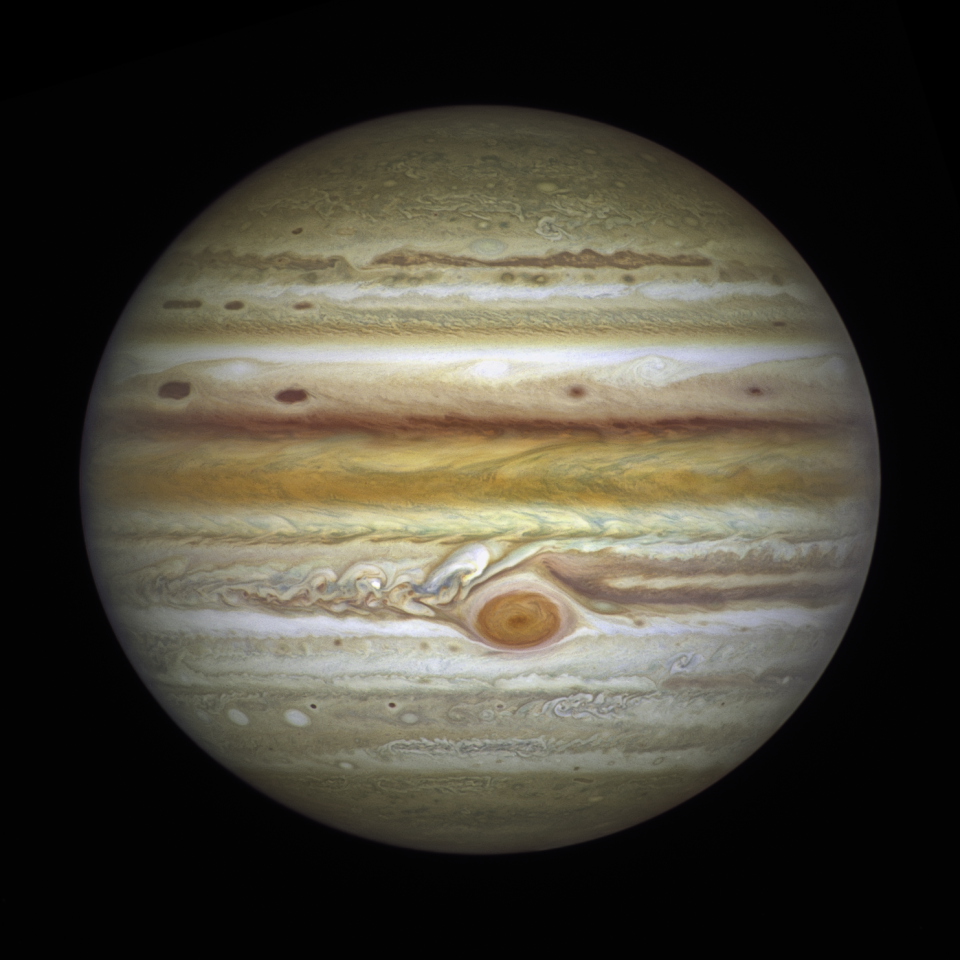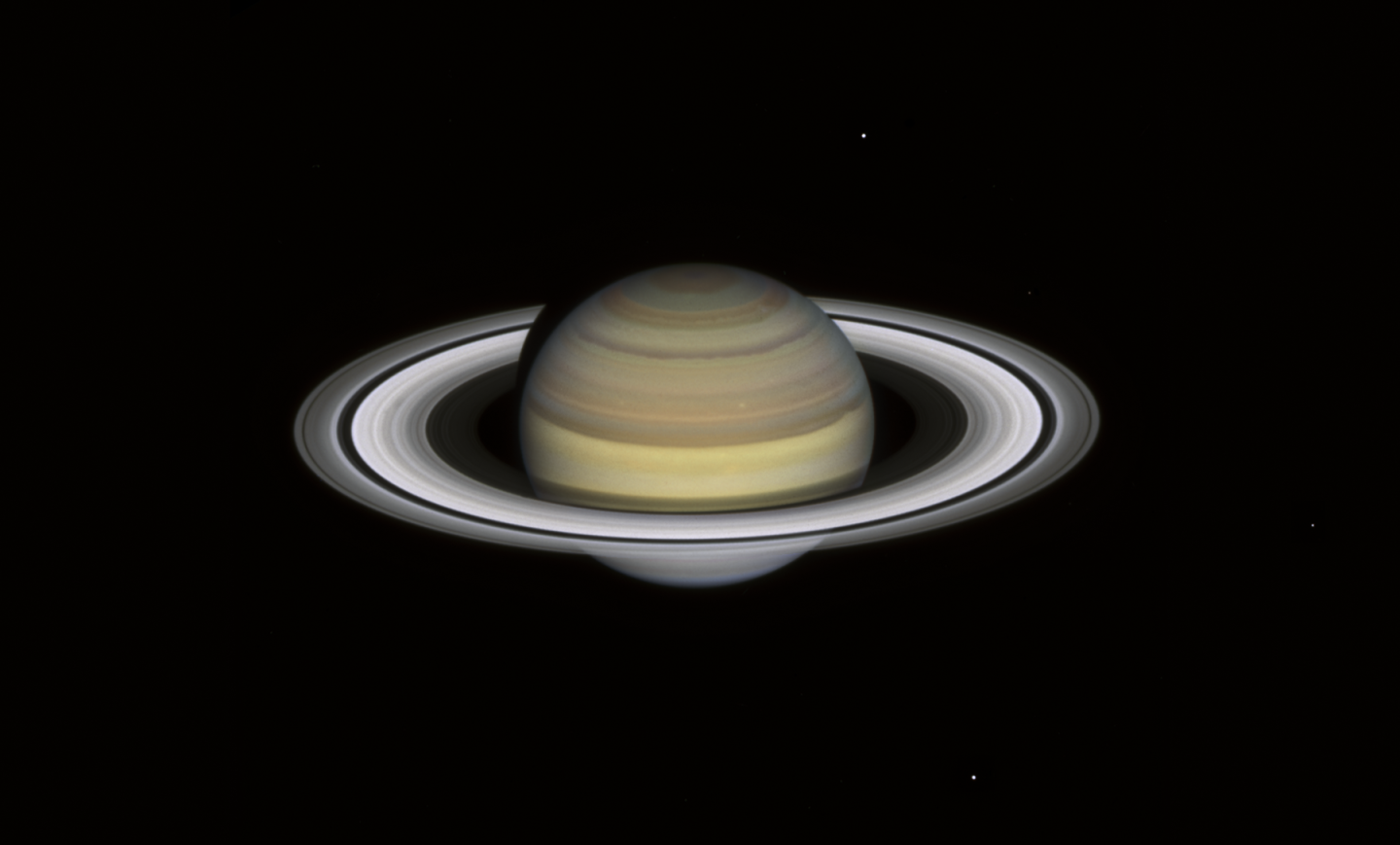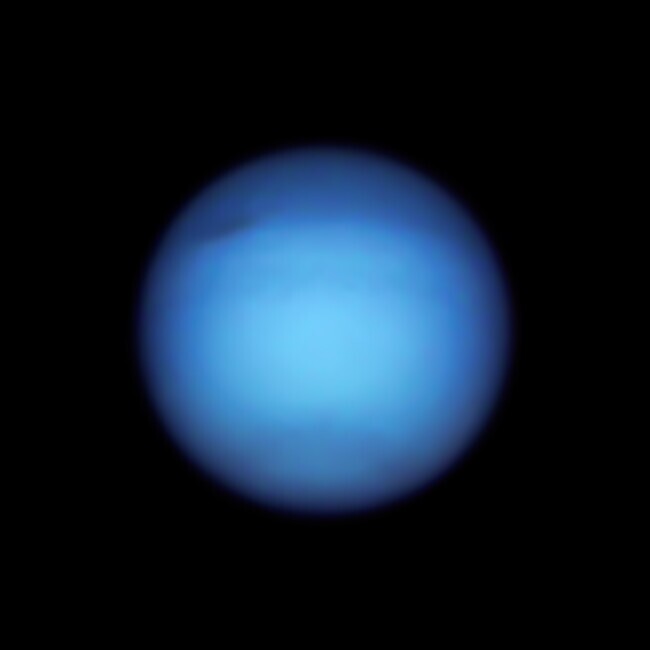Every year, the Hubble Space Telescope conducts a grand tour of the outer solar system planets, checking their turbulent atmospheres for changes in weather, storms, clouds and colors. This year’s shots are now in, revealing a few surprises.
Jupiter, Saturn, Uranus and Neptune are the giant planets that lurk in the solar system’s suburbs. As big soupy balls of gas and ice, the colors and patterns on their surfaces constantly change, driven by dynamic forces that aren’t entirely understood.
So Hubble takes new snaps every year, as part of the Outer Planets Atmospheres Legacy (OPAL) program, to watch how things evolve over time. NASA has now released the 2021 images, taken in September and October, showing some intriguing evolution since last year’s visit.
As usual, the most striking feature of Jupiter is the Great Red Spot, a storm bigger than Earth that’s been raging for centuries. But what caught the attention of astronomers is the deep orange band around the equator, which is normally a cloudy white but for the last few years has appeared darker. The team had expected it to be fading back to white by now, but it’s more vibrant than ever.

NASA, ESA, A. Simon (Goddard Space Flight Center), and M.H. Wong (University of California, Berkeley) and the OPAL team
North of that, several brand new storms are brewing, visible as deep red dots within a pale band of clouds. The team says that cloud structures from deep within the planet can be seen in these spots.
Over on Saturn, the huge hexagonal storm at the north pole is once again visible, after being tricky to spot in 2020’s photo. As fall descends in the planet’s northern hemisphere, the colors are changing rapidly, with clear bands circling the gaseous world.

NASA, ESA, A. Simon (Goddard Space Flight Center), and M.H. Wong (University of California, Berkeley) and the OPAL team
The southern hemisphere is emerging from winter, which can still be seen as a pale blue region peeking out from beneath the rings.
Uranus is a marvelous marble this year, sporting a bright white cap on the north pole and a sharp ring of blue around the middle. The strange effect seems to be due to increased ultraviolet radiation from sunlight as the northern hemisphere enjoys its springtime, but the astronomers aren’t sure if that’s changing the opacity of the methane in the atmosphere or if there’s some other variation in the aerosol particles there.

NASA, ESA, A. Simon (Goddard Space Flight Center), and M.H. Wong (University of California, Berkeley) and the OPAL team
The border between the blue and white regions has remained stable at a latitude of 43 degrees for a few years, which may suggest a strong jetstream has formed there.
And the final stop on the grand tour is Neptune. This year’s weather shows clear-blue skies with very few white clouds visible. There is however a huge, dark storm visible in the northern hemisphere, towards the upper left of the image.

NASA, ESA, A. Simon (Goddard Space Flight Center), and M.H. Wong (University of California, Berkeley) and the OPAL team
Discovered in 2018, this storm had been moving towards the equator for the last few years, but has recently reversed course. Another dark circle can be seen around the south pole of the planet.
Studying how these worlds evolve over the years can not only tell astronomers a lot about them, but can also inform interpretations of newfound planets around distant stars.
A closer look at each planet can be seen in the video below.
Hubble’s Grand Tour of the Outer Solar System
Source: NASA
Source of Article